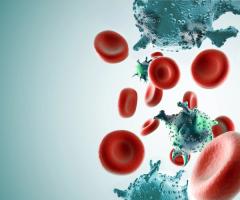
Acute Myeloid Leukemia Subtypes and Risk Stratification
An expert on acute myeloid leukemia gives an overview of disease subtypes and provides insights on risk stratification.
Episodes in this series

This is a video synopsis/summary of an OncView® featuring Ghayas C. Issa, MD.
Issa explains that acute myeloid leukemia (AML) classification relies more on mutations and cytogenetics rather than cell types involved. Previously, subtypes were defined by phenotype (monocytic, megakaryocytic). While cell phenotype has some relevance for clinical trials, major classification now uses genetic and chromosomal abnormalities.
The most common system is the European LeukemiaNet criteria, stratifying AML into favorable, intermediate, and adverse risk categories. Classification is predominantly by cytogenetics, missing or added chromosomes. Core binding factor leukemias with inversion 16 or 8;21 translocations have excellent an prognosis. Complex karyotypes with 5 or more abnormalities have a very poor prognosis.
Mutations contribute to outcomes. NPM1 and CEBPA mutations lead to more favorable outcomes and TP53 lead to less favorable outcomes. Other poor risk markers are inversion 3q26 and MECOM rearrangements. KMT2A 9;11 translocations are intermediate risk, while other KMT2A abnormalities are unfavorable. FLT3 mutations are now largely unfavorable, markedly so with internal tandem duplications having high allelic burden.
Video synopsis is AI-generated and reviewed by Cancer Network® editorial staff.
Newsletter
Stay up to date on recent advances in the multidisciplinary approach to cancer.







